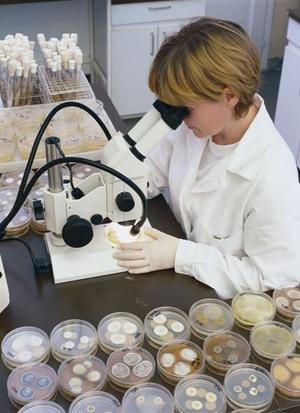Public health395 medicines and Vaccines in development to fight infectious diseases
More than 9.5 million people worldwide die each year from infectious diseases; in the United States, two million drug-resistant infections are reported each year, causing great suffering and costing the health system up to $34 billion a year; America’s biopharmaceutical research companies this year have 395 new medicines and vaccines in the pipeline to fight infectious diseases. All 395 are in later stages of development, meaning in clinical trials or under Food and Drug Administration (FDA) review

Critical challenges remain in the centuries-old battles against infectious diseases, particularly as bacteria and viruses mutate and as the threat of bioterrorism grows. Responding to this need, America’s biopharmaceutical research companies this year have 395 new medicines and vaccines in the pipeline to fight infectious diseases. All 395 are in later stages of development, meaning in clinical trials or under Food and Drug Administration (FDA) review.
Medical News Today reports that scientists have made huge strides against infectious diseases, which until the 1920s were the leading cause of death in the United States. Still, more than 9.5 million people worldwide die each year from infectious diseases. Of particular concern today are virulent forms of “super bugs” that have mutated and grown resistant to available antibiotics (“NDM-1 may herald the end of antibiotic era,” 13 August 2010 HSNW). Among medicines in development are those for resistant forms of tuberculosis and staph infections, according a new report, “Medicines in Development for Infectious Diseases 2010,” prepared by the Pharmaceutical Research and Manufacturers of America (PhRMA).
“Infectious diseases continue to cause great human suffering, and the effort to conquer them is one of the greatest human endeavors,” said PhRMA president and CEO John J. Castellani. “Many once-deadly diseases have been nearly wiped out or are effectively controlled thanks to medical progress, but much more needs to be done.”
Some of the diseases targeted plague the developing world, while others threaten the lives of humans in every country, including the United States. In Africa, for example, a child dies every 45 seconds of malaria. Six medicines and five vaccines for malaria are currently in development, according to the PhRMA report.
Scientists are also working to prevent, treat, or cure other devastating diseases that mostly strike people in the developing world, such as the Ebola virus, dengue fever, yellow fever, typhoid and cholera.
Increasing attention is also being paid to “super bugs,” like Methicillin-resistant Staphylococcus aureus (MRSA), that have spread throughout the world.
In the United States, two million drug-resistant infections are reported each year, causing great suffering and costing the health system up to $34 billion a year, according to the Infectious Disease Society.
